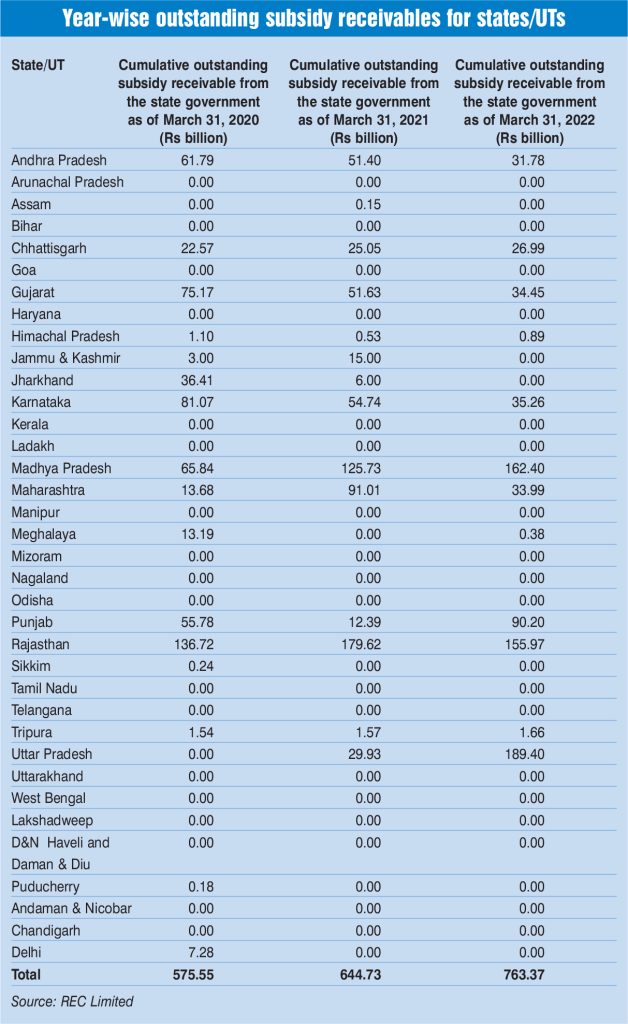 To enhance the financial stability of discoms and establish a sustainable framework for the power sector, the Ministry of Power (MoP) has recently amended Electricity Rules, 2005 and notified the Electricity (Second Amendment) Rules, 2023 on July 26, 2023. According to the MoP, the need for these changes stems from the prevalence of improper and non-transparent accounting practices that have resulted in delayed or non-payment of state-declared subsidies. As per these amendments, discoms are now mandated to provide quarterly reports containing detailed information about subsidy payments.
To enhance the financial stability of discoms and establish a sustainable framework for the power sector, the Ministry of Power (MoP) has recently amended Electricity Rules, 2005 and notified the Electricity (Second Amendment) Rules, 2023 on July 26, 2023. According to the MoP, the need for these changes stems from the prevalence of improper and non-transparent accounting practices that have resulted in delayed or non-payment of state-declared subsidies. As per these amendments, discoms are now mandated to provide quarterly reports containing detailed information about subsidy payments.
Key highlights of the amended rules
Subsidy accounting and payment: As per the rules, the accounting of subsidy payable under Section 65 of the Act will be undertaken by the distribution licensee in accordance with the standard operating procedures issued by the central government. The state commissions will issue quarterly reports for each discom in their jurisdiction, providing findings on the subsidy demands made by the discom in the quarter. This will be based on accurate accounts of energy consumed by the subsidised category and consumer category-wise per unit subsidy declared by the states. Further, the report will include the actual payment of subsidy and the gap between the subsidy due and the amount paid.
Under the revised rules, discoms are now obliged to submit quarterly reports within 30 days after the respective quarter ends. Following this, the state commission will assess the reports and, if necessary, provide its findings within 30 days of receiving the report.
quarter ends. Following this, the state commission will assess the reports and, if necessary, provide its findings within 30 days of receiving the report.
In cases where subsidies have not been paid upfront, the state commission will issue an order to implement the tariff without factoring in the subsidy. Furthermore, measures have been instituted to ensure adherence to the Act, rules, and regulations governing subsidy accounting and billing. If any discrepancies are identified, the state commission will take appropriate action against those responsible for non-compliance.
Framework for financial sustainability: The new rules also set a framework for financial sustainability. It stipulates that the aggregate technical and commercial (AT&C) loss reduction trajectory, to be approved by the state commissions for tariff determination, should be in accordance with the trajectory agreed by state governments and approved by the central government under any national scheme or programme. Further, the trajectory for improving both collection and billing efficiency of discoms should be determined by the state commissions.
The rules emphasise that all prudent costs of power procurement incurred by the distribution licensees for ensuring 24×7 electricity supply to consumers, in accordance with the Resource Adequacy plan prepared under the Electricity (Amendment) Rules, 2022, shall be considered. However, this will be subject to transparent procurement and approval by the appropriate commission.
The amendment also introduces procedures for allowing the transfer of expenses borne by distribution licensees for the creation and upkeep of distribution assets. To be eligible for this cost transfer, these assets must adhere to the licensee’s approved capex roll-out plan, undergo competitive and transparent procurement, and be accurately recorded in the fixed asset register.
In terms of gains or losses owing to deviations from the AT&C loss reduction trajectory, the rule proposes that they should be calculated based on the average power purchase cost and distributed between the distribution licensee and consumers. Specifically, two-thirds of any gains will be passed on to consumers through tariff adjustments, while the remaining one-third will be retained by the distribution licensee. Conversely, two-thirds of any losses will be absorbed by the distribution licensee, with consumers bearing the remaining one-third. Furthermore, state commissions will establish the operations and maintenance standards for distribution licensees in accordance with the guidelines provided by the Central Electricity Authority. This will ensure the efficient maintenance of infrastructure by distribution companies.
To guarantee a fair return on equity, state commissions will have the authority to assess the overall risks and the prevailing cost of capital. They will then adjust the return on equity to match the rate specified by the central commission for generation and transmission, ensuring that discoms receive appropriate returns on investment.
Conclusion
Overall, these new rules aim to simplify subsidy accounting, create a framework for financial stability, and provide directives for prudent cost management. The amendment’s primary objective is to guarantee the timely and effective distribution of subsidies to their intended recipients. Looking ahead, this move is anticipated to encourage discoms to both uphold and enhance their operational efficiency, thereby diminishing losses within the distribution sector.
